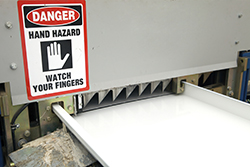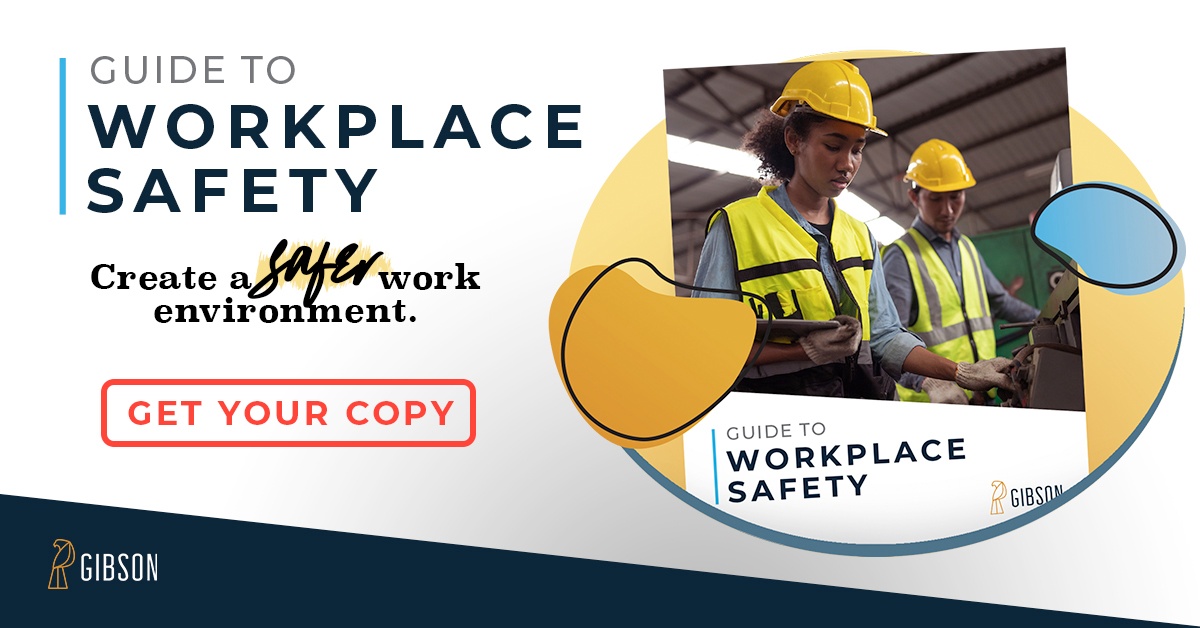 Machines can significantly improve production and efficiency. But they do not come without risks. The moving parts, sharp edges, and hot surfaces are hazards to workers. Many machine-related injuries can be prevented with the proper use of safeguards. It is important to understand what dangers machines present and what elements are needed to implement effective safeguarding practices.
Machines can significantly improve production and efficiency. But they do not come without risks. The moving parts, sharp edges, and hot surfaces are hazards to workers. Many machine-related injuries can be prevented with the proper use of safeguards. It is important to understand what dangers machines present and what elements are needed to implement effective safeguarding practices.
Causes Of Machine Accidents
- Reaching in to “clear” equipment
- Not using Lockout/Tagout
- Unauthorized persons doing maintenance or using the machines
- Missing or loose machine guards
Where Mechanical Hazards Occur
Hazards often occur at the point of operation, or the point where work is performed on the material. This could be cutting, shaping, boring, or forming of stock. Regardless the type of work, the point of operation of the work must be safeguarded.
Additionally, all parts of the machine that move pose threat of injury. Examples include: flywheels, pulleys, belts, couplings, chains, cranks, gears, etc. The feed mechanisms and auxiliary parts of the machine should also be considered.
Another area prone to hazard are in-running nip points. These are created in three ways: between 2 rotating parts, between rotating and tangential parts, or between rotating and fixed parts which shear, crush, or abrade.
Requirements For Safeguards
In order to properly protect workers, safeguards should do the following:
- Prevent contact - prevent worker’s body or clothing from contacting hazardous moving parts
- Be secure - firmly secured to machine and not easily removed
- Protect from falling objects - ensure that no objects can fall into moving parts
- Create no new hazards - must not have shear points, jagged edges or unfinished surfaces
- Create no interference - must not prevent worker from performing the job quickly and comfortably
- Allow safe lubrication - if possible, be able to lubricate the machine without removing the safeguards
Methods Of Machine Guarding
Guards and devices are the main methods of machine guarding. OSHA provides resources about each method. Guards are defined as barriers which prevent access to danger areas. In general, there are four main types: fixed, interlocked, adjustable, and self-adjusting. Meanwhile, safety devices help protect workers in several ways, including: stopping a machine if a hand or body part enters a danger area, restraining or withdrawing the operator’s hand from the danger area, or require the operator to use both of their hands, among others.
Who Is Responsible For Machine Safety?
Management, supervisors and employees all hold responsibilities related to machine safety.
- Management should: ensure all machinery is properly guarded
- Supervisors should: train employees on specific guard rules in their areas, ensure machine guards remain in place and are functional, and immediately correct machine guard deficiencies
- Employees should: not remove guards unless machine is locked and tagged, report machine guard problems to supervisors immediately, and not operate equipment unless guards are in place
Training
Proper workplace training is critical to reducing mechanical hazards. Equipment operators should receive training on the following:
- Hazards associated with particular machines
- How the safeguards provide protection and the hazards for which they are intended
- How and why to use the safeguards
- How and when safeguards can be removed and by whom
- What to do if a safeguard is damaged, missing, or unable to provide adequate protection





